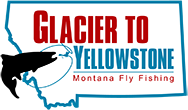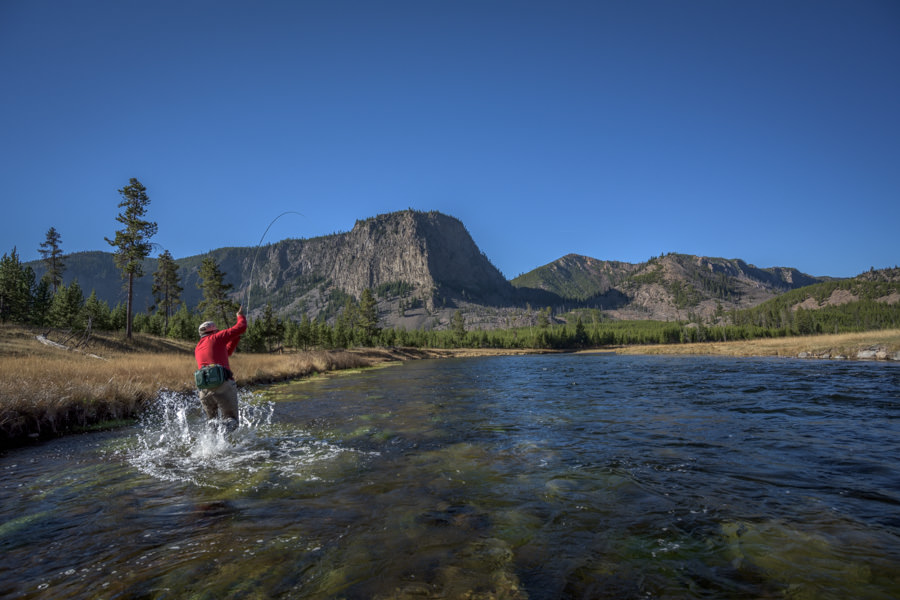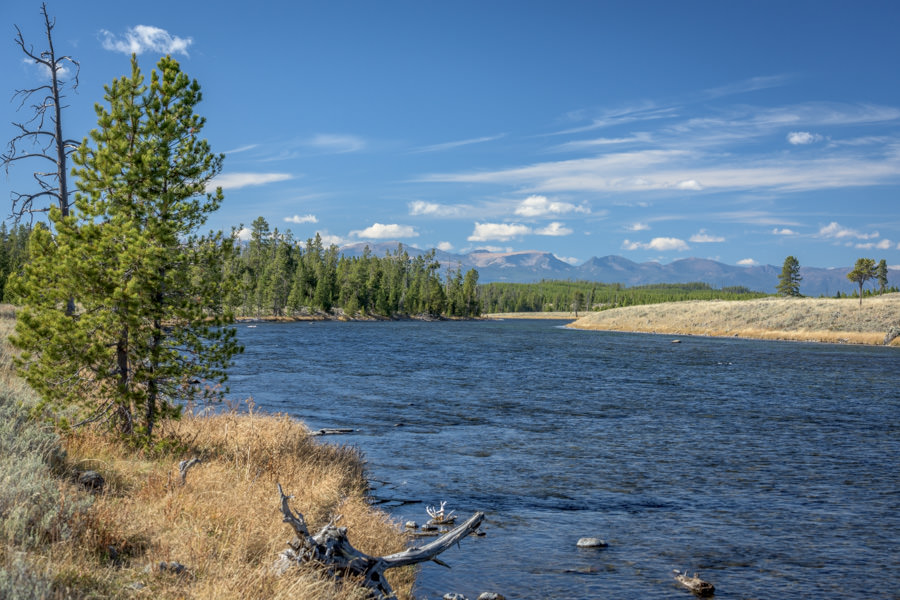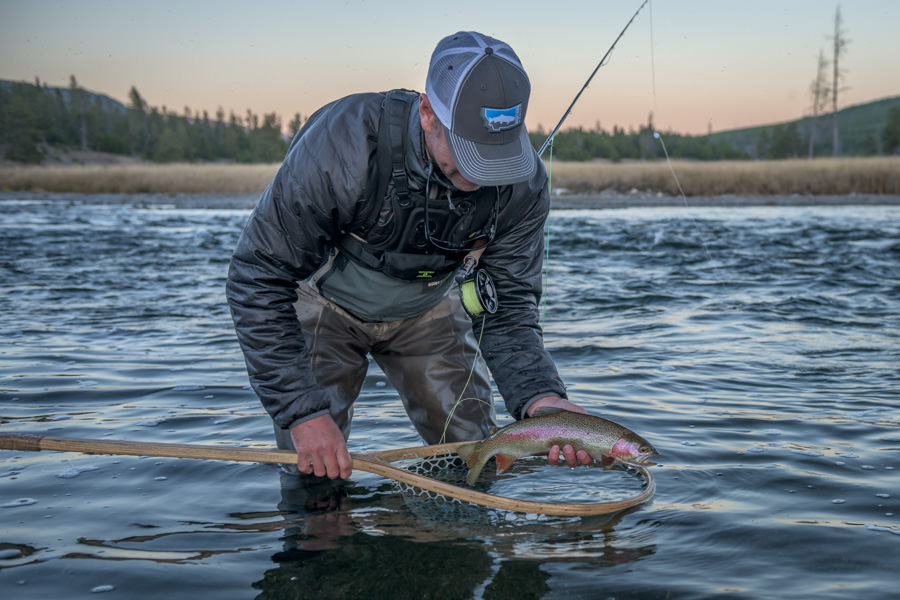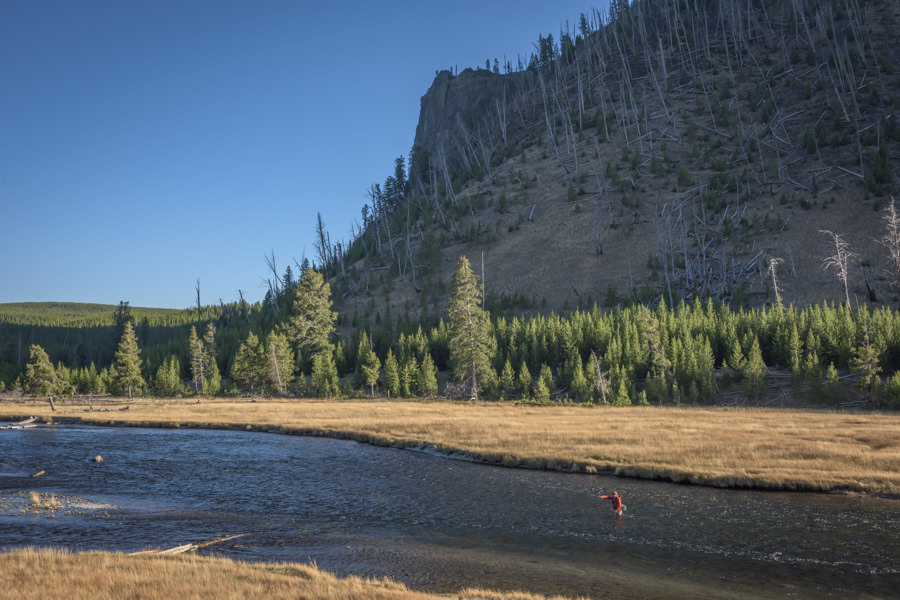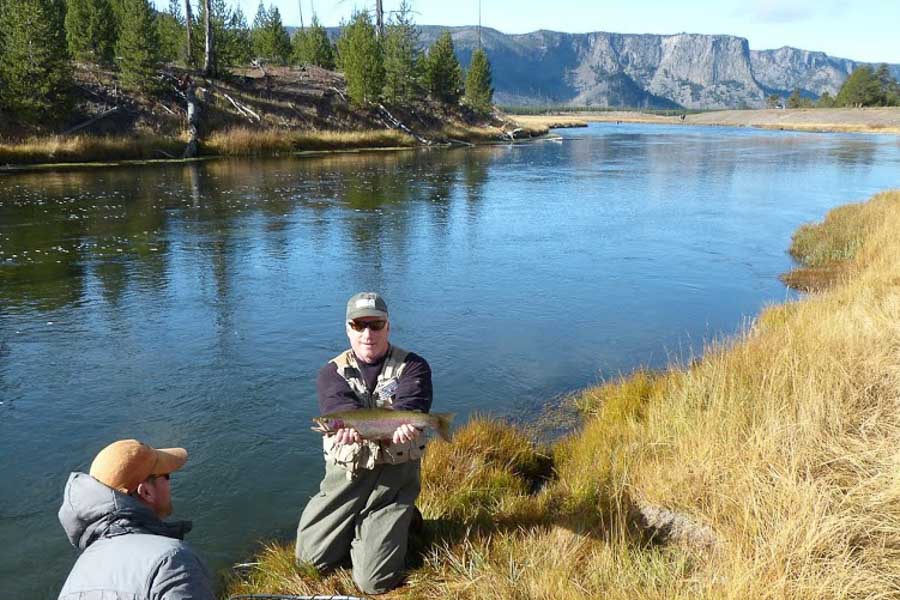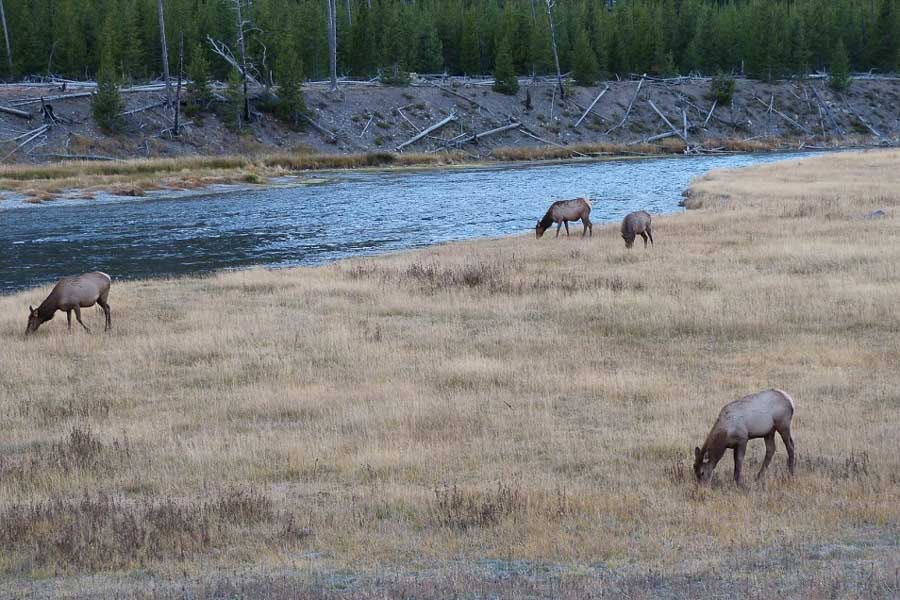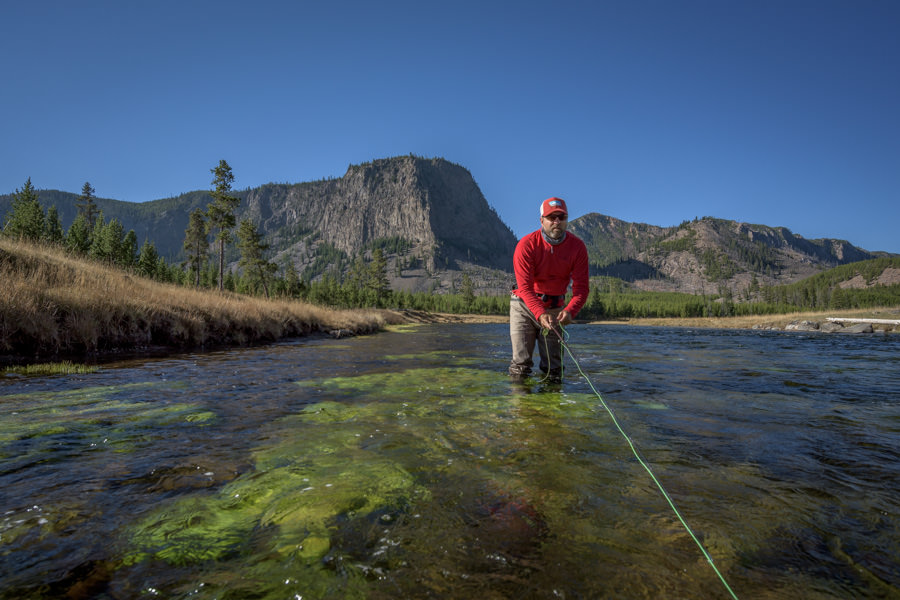The Madison in Yellowstone Park has a completely different character than the stretch downstream in the "float section". Instead of fast riffles and runs peppered with large boulders, the river inside of the Park resembles a big spring creek. It features a slow to moderate gradient with long, gentle glides and riffles. Sandbars and weedbeds are common. The river has a population of resident trout that are available to the angler all season, although it is nowhere near as high as other nearby rivers. In the Fall, fish pour into the river from Hebgen Lake, and this is certainly the most popular time to fish. Access to the Madison is very easy and straightforward, as the West Entrance Road follows the river from the park entrance up to Madison Junction.
Fishing the Madison
The Madison is usually too high to fish when the season opens Memorial Day weekend. The river will drop and clear during the first week or two of June and there will be some Salmonflys and Golden Stones hatching during this period. Nymphing under an indicator with a rubber legged stonefly and a mayfly or caddis dropper is effective when you don't see any fish rising. By the middle of June you will usually see some good Pale Morning Dun hatches from mid morning through mid afternoon, with Caddis following in the evening. As stated above, the population of resident fish here is not particularly high, so I like to focus my fishing during periods of hatches. This allows me to walk the bank and stalk individual fish, rather than blind fishing to water that may or may not hold many trout.
By July the Madison is usually starting to get too warm for good fishing. The Firehole River pumps a large volume of water into the Madison, and the Firehole sees water temperatures approaching 80 degrees most summers. There are still some limited opportunities in the early morning and late evening, but by this time in the summer there are plenty of better options.
As the weather cools in September, mayfly hatches start up again and you can find some very good terrestrial fishing at times as well. The main event, however, is in very late September and especially October when big Browns and Rainbows start moving into the river from Hebgen Lake. These fish average around 18 inches, but each year a few real brutes are caught. Unaccustomed to the river environment, these fish seek out deep, slow pools to rest in as they make there way upstream to spawn. This migration draws anglers from around the country and it can be crowded at times, especially when the weather is nice. Nymphs and streamers are the preferred way to target these fish. Popular nymphs include rubber legged stoneflys, pheasant tails, and mega princes. The most popular way to fish streamers is to swing them across the current, as you would for steelhead or salmon. This allows your streamer to sink down to level that the fish is holding. This technique also works with large soft hackles. The fishing for these fall spawners will remain good up until the first Sunday in November, which is the end of the park season.
Contact Montana Angler Fly Fishing for guided fly fishing trips in Yellowstone National Park
